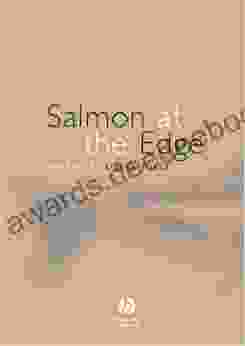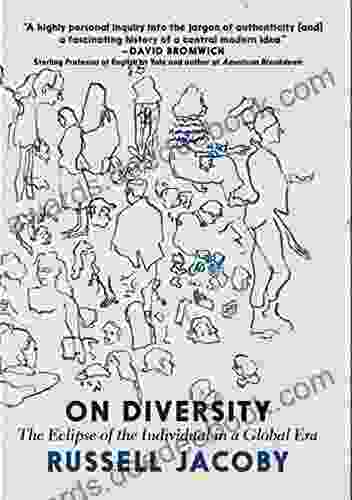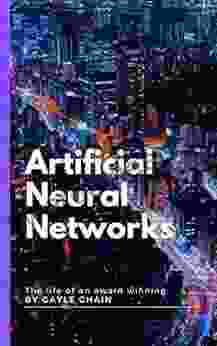Motion Vision: Computational Neural and Ecological Constraints

Motion vision is the ability to perceive and interpret the movement of objects in the visual field. It is a complex process that involves a number of different neural and ecological constraints.
Neural constraints refer to the limitations of the visual system that affect how we perceive motion. These constraints include:
- Temporal resolution: The visual system can only resolve motion at a certain rate. This is due to the fact that the retina is made up of a large number of individual photoreceptors, each of which has a finite response time.
- Spatial resolution: The visual system can only resolve motion at a certain spatial scale. This is due to the fact that the retina is divided into a number of different regions, each of which contains a different density of photoreceptors.
- Contrast sensitivity: The visual system is more sensitive to motion in high-contrast areas than in low-contrast areas. This is due to the fact that high-contrast areas produce a stronger signal in the retina.
Ecological constraints refer to the limitations of the environment that affect how we perceive motion. These constraints include:
5 out of 5
| Language | : | English |
| File size | : | 6314 KB |
| Text-to-Speech | : | Enabled |
| Screen Reader | : | Supported |
| Word Wise | : | Enabled |
| Print length | : | 409 pages |
| Paperback | : | 152 pages |
| Item Weight | : | 1.74 pounds |
| Hardcover | : | 436 pages |
| X-Ray for textbooks | : | Enabled |
- The speed of movement: The speed of movement affects how we perceive the direction of motion. Objects that move quickly appear to move in a different direction than objects that move slowly.
- The size of the object: The size of the object affects how we perceive the speed of movement. Objects that are large appear to move more slowly than objects that are small.
- The distance of the object: The distance of the object affects how we perceive the motion of the object. Objects that are close appear to move more quickly than objects that are far away.
The neural mechanisms of motion perception are complex and involve a number of different brain areas. The primary visual cortex (V1) is responsible for processing the initial visual input from the retina. V1 contains a number of different neurons that are tuned to respond to different directions of motion. These neurons are organized into columns, each of which contains neurons that respond to a specific direction of motion.
The middle temporal area (MT) is responsible for processing the output from V1. MT contains a number of different neurons that are tuned to respond to different speeds and directions of motion. These neurons are organized into columns, each of which contains neurons that respond to a specific speed and direction of motion.
The medial superior temporal area (MST) is responsible for processing the output from MT. MST contains a number of different neurons that are tuned to respond to different types of motion, such as self-motion, object motion, and biological motion.
The ecological constraints on motion perception are also important to consider. The speed of movement, the size of the object, and the distance of the object all affect how we perceive motion.
The speed of movement affects how we perceive the direction of motion. Objects that move quickly appear to move in a different direction than objects that move slowly. This is due to the fact that the visual system has a limited temporal resolution. The visual system cannot resolve motion that is too fast or too slow.
The size of the object affects how we perceive the speed of movement. Objects that are large appear to move more slowly than objects that are small. This is due to the fact that the visual system has a limited spatial resolution. The visual system cannot resolve motion that is too small or too large.
The distance of the object affects how we perceive the motion of the object. Objects that are close appear to move more quickly than objects that are far away. This is due to the fact that the visual system has a limited depth of field. The visual system cannot resolve motion that is too close or too far away.
Motion vision is a complex process that involves a number of different neural and ecological constraints. These constraints affect how we perceive the direction, speed, and size of moving objects. By understanding these constraints, we can better understand how the visual system works.
5 out of 5
| Language | : | English |
| File size | : | 6314 KB |
| Text-to-Speech | : | Enabled |
| Screen Reader | : | Supported |
| Word Wise | : | Enabled |
| Print length | : | 409 pages |
| Paperback | : | 152 pages |
| Item Weight | : | 1.74 pounds |
| Hardcover | : | 436 pages |
| X-Ray for textbooks | : | Enabled |
Do you want to contribute by writing guest posts on this blog?
Please contact us and send us a resume of previous articles that you have written.
 Book
Book Page
Page Genre
Genre Library
Library Paperback
Paperback E-book
E-book Magazine
Magazine Paragraph
Paragraph Bookmark
Bookmark Glossary
Glossary Bibliography
Bibliography Foreword
Foreword Preface
Preface Synopsis
Synopsis Scroll
Scroll Bestseller
Bestseller Narrative
Narrative Memoir
Memoir Encyclopedia
Encyclopedia Dictionary
Dictionary Narrator
Narrator Character
Character Librarian
Librarian Catalog
Catalog Card Catalog
Card Catalog Borrowing
Borrowing Stacks
Stacks Archives
Archives Scholarly
Scholarly Lending
Lending Reserve
Reserve Academic
Academic Rare Books
Rare Books Special Collections
Special Collections Interlibrary
Interlibrary Literacy
Literacy Dissertation
Dissertation Storytelling
Storytelling Reading List
Reading List Book Club
Book Club David E Newton
David E Newton Stewart Bell
Stewart Bell Gerald A Benjamin
Gerald A Benjamin Vanessa Mooncie
Vanessa Mooncie Christian Salmon
Christian Salmon Alex Warrington Ph D
Alex Warrington Ph D Ken Anderberg
Ken Anderberg Val Mcdermid
Val Mcdermid Roland Siegwart
Roland Siegwart Dean G Parsons
Dean G Parsons Richard Prosser
Richard Prosser David Lee Joyner
David Lee Joyner Paul Harding
Paul Harding Tammy Pasterick
Tammy Pasterick Timothy P Carney
Timothy P Carney Patricia L Maclachlan
Patricia L Maclachlan Jimmy Carter
Jimmy Carter Nick Spalding
Nick Spalding Jeff Brown
Jeff Brown Jane Lovering
Jane Lovering
Light bulbAdvertise smarter! Our strategic ad space ensures maximum exposure. Reserve your spot today!

 Mitch FosterSalmon at the Edge: Cressida McLaughlin's Captivating Exploration of Identity...
Mitch FosterSalmon at the Edge: Cressida McLaughlin's Captivating Exploration of Identity...
 Dwayne MitchellUnveiling the Profound Legacy of Mayor Coleman Young: A Journey Through His...
Dwayne MitchellUnveiling the Profound Legacy of Mayor Coleman Young: A Journey Through His... Ike BellFollow ·6.1k
Ike BellFollow ·6.1k Tom ClancyFollow ·3.4k
Tom ClancyFollow ·3.4k Ira CoxFollow ·17.7k
Ira CoxFollow ·17.7k Holden BellFollow ·4k
Holden BellFollow ·4k Emanuel BellFollow ·10.9k
Emanuel BellFollow ·10.9k Allen ParkerFollow ·14.5k
Allen ParkerFollow ·14.5k Ralph EllisonFollow ·15.2k
Ralph EllisonFollow ·15.2k Carson BlairFollow ·10.5k
Carson BlairFollow ·10.5k

 Roger Turner
Roger TurnerThe Waning of the Individual in the Global Era: A...
In the rapidly globalizing world of today,...

 Reginald Cox
Reginald CoxFirst of Verbs: An Early Language
The First of Verbs (FOV) is an early...

 Cody Blair
Cody BlairThe Biography Of The Myth: Routledge Historical...
Who is the Myth?...

 Dean Cox
Dean CoxArtificial Neural Networks: Unraveling the Amazing...
Artificial Neural Networks (ANNs),...

 Kyle Powell
Kyle PowellHow To Amend Our Constitution To Rescue Democracy For All...
Our democracy is in...
5 out of 5
| Language | : | English |
| File size | : | 6314 KB |
| Text-to-Speech | : | Enabled |
| Screen Reader | : | Supported |
| Word Wise | : | Enabled |
| Print length | : | 409 pages |
| Paperback | : | 152 pages |
| Item Weight | : | 1.74 pounds |
| Hardcover | : | 436 pages |
| X-Ray for textbooks | : | Enabled |










